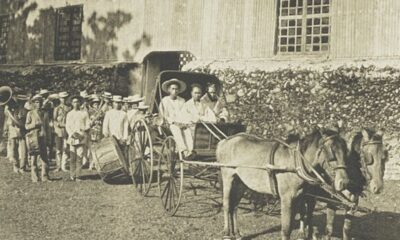TOPIC
A Complete Beginner’s Guide to Jaisalmer Camel Safari Tours

Jaisalmer, the “Golden City” of Rajasthan, is famous for its golden sandstone architecture, majestic forts, and vast stretches of the Thar Desert. But perhaps the most iconic experience it offers is the camel safari—a journey across the rolling sand dunes, filled with adventure, culture, and natural beauty. For first-time travelers, Jaisalmer camel safari tours are an unforgettable way to connect with the desert’s charm and the traditions of Rajasthan.
If you’ve never been on one before, this beginner’s guide will walk you through everything you need to know—from what to expect to tips for making the most of your adventure.
Why Choose Jaisalmer for a Camel Safari?
While camel safaris are available in various parts of Rajasthan, Jaisalmer stands out for its pristine dunes, stunning sunsets, and rich cultural experiences. The city’s proximity to the Sam and Khuri sand dunes makes it a perfect base for exploring the desert. Many Jaisalmer camel safari tours also include traditional music performances, folk dances, and local cuisine, making the experience both scenic and immersive.
Types of Jaisalmer Camel Safari Tours
Camel safaris aren’t one-size-fits-all—you can choose from a variety of packages depending on your preferences, time, and comfort level.
1. Half-Day Safaris
Perfect for those short on time, these tours typically include a camel ride to nearby dunes, a sunset view, and sometimes snacks or tea before returning to the city.
2. Full-Day Safaris
These involve a longer ride, visits to small desert villages, and a picnic lunch under the open sky. You’ll have plenty of time to enjoy the changing desert landscapes.
3. Overnight Safaris
One of the most popular options, overnight tours allow you to watch the sunset and sunrise over the dunes, enjoy a traditional Rajasthani dinner, and sleep under a canopy of stars.
4. Multi-Day Safaris
For the truly adventurous, multi-day safaris involve deeper exploration into the desert, camping at different spots each night, and experiencing remote village life.
What to Expect on a Camel Safari
1. The Ride
Your journey begins with meeting your camel and its handler. Riding a camel can be a bit bumpy at first, but you’ll quickly get used to the rhythm. Most tours keep rides to 1–2 hours at a stretch to avoid discomfort.
2. Scenic Landscapes
The desert isn’t just sand—expect to see rocky outcrops, small shrubs, herds of goats, and the occasional desert fox or peacock. The golden hue of the sand changes beautifully as the sun moves across the sky.
3. Local Hospitality
Camel safaris often include visits to small villages where you can meet locals, see traditional mud houses, and learn about desert life.
4. Evening Entertainment
If your safari includes an overnight stay, you’ll likely enjoy a campfire dinner, folk music, and Kalbelia dance performances under the stars.
Best Time to Go on a Jaisalmer Camel Safari
The ideal time for Jaisalmer camel safari tours is between October and March, when the weather is cooler and more comfortable for outdoor activities. Days are pleasantly warm, while evenings can get chilly, especially in December and January. Avoid the summer months, as daytime temperatures can be extreme.
What to Pack for Your Safari
- Comfortable Clothing: Loose, breathable fabrics are best for daytime, with a light jacket or shawl for the evenings.
- Sun Protection: A wide-brimmed hat, sunglasses, and sunscreen are essential.
- Footwear: Closed-toe shoes or sandals with straps for comfort and protection.
- Reusable Water Bottle: Staying hydrated is crucial in the desert.
- Camera: For capturing stunning sunsets, camel rides, and night skies.
- Small Backpack: To keep essentials handy while riding.
Tips for First-Time Safari Travelers
- Choose a Reputable Tour Operator: Look for companies with good reviews, licensed guides, and well-treated camels.
- Communicate Your Comfort Level: Let your guide know if you’re feeling tired or need breaks.
- Respect the Local Culture: Dress modestly and be mindful when taking photos of people.
- Be Prepared for Minimal Facilities: In remote desert areas, facilities can be basic. Overnight camps usually provide clean bedding, but don’t expect luxury unless you’ve booked a high-end package.
- Stay Hydrated and Eat Light: The desert climate can be dehydrating, so drink water often, and opt for lighter meals to avoid discomfort during the ride.
Cultural Highlights of Jaisalmer Camel Safari Tours
A camel safari isn’t just about the dunes—it’s a gateway to Rajasthan’s vibrant heritage. Along your journey, you might witness:
- Folk Music and Dance: Performances often include songs about desert life, history, and love stories.
- Rajasthani Cuisine: Enjoy dishes like dal baati churma, ker sangri, and gatte ki sabzi cooked over an open flame.
- Local Handicrafts: Village visits often present opportunities to buy handwoven textiles, leather goods, and jewelry directly from artisans.
The Magic of Desert Nights
One of the highlights of Jaisalmer camel safari tours is the chance to sleep under a vast, star-studded sky. Far from city lights, the desert offers some of the clearest views of the Milky Way. Many travelers describe it as a humbling, almost spiritual experience—lying on a cot or mattress on the dunes, listening to the silence broken only by the wind.
Sustainable Travel in the Desert
As tourism grows, so does the responsibility to protect the fragile desert ecosystem. Travelers can help by:
- Avoiding plastic waste—carry reusable bottles and bags.
- Choosing operators who care for their camels and minimize environmental impact.
- Respecting local traditions and supporting community-run camps.
By traveling responsibly, you help preserve the beauty and culture that make Jaisalmer’s camel safaris so special.
Conclusion
For beginners, Jaisalmer camel safari tours offer a perfect blend of adventure, culture, and natural beauty. From the first sway of the camel to the golden glow of a desert sunset, every moment feels like stepping into another world. Whether you choose a short sunset ride or a multi-day expedition, the experience will leave you with memories of Rajasthan’s desert magic that last a lifetime.
The key is to choose the right tour for your comfort level, travel style, and interests. Prepare well, travel responsibly, and let the Thar Desert’s timeless charm carry you into a world of serenity and wonder.
TOPIC
The Role of Gas Origination in the Energy Supply Chain

Introduction to Gas Origination
Gas origination might not be a term that’s on everyone’s lips, but it plays a crucial role in powering our modern world. As we transition toward sustainable energy sources, understanding how gas fits into the broader energy supply chain becomes increasingly vital. From extraction to distribution, gas origination ensures that this essential resource reaches consumers and businesses efficiently.
Imagine turning on your heater during winter or cooking dinner with natural gas—these everyday activities rely heavily on an intricate web of processes that begin long before the flames flicker to life. In this blog post, we’ll delve into the importance of gas origination within the energy landscape and explore its ripple effects throughout various sectors. Buckle up as we navigate through challenges, innovations, and what lies ahead for this often-overlooked segment of the industry!
Understanding the Energy Supply Chain
The energy supply chain is a complex web that connects various stages of energy production, distribution, and consumption. It begins with resource extraction, such as oil drilling or natural gas harvesting.
Once extracted, these resources undergo processing to convert them into usable forms. This stage often involves refining crude oil or treating natural gas to remove impurities.
Transportation follows, moving the processed fuels through pipelines or via tankers to meet demand in different regions.
Electricity generation comes next; power plants transform fossil fuels into electricity for homes and businesses alike.
Utilities distribute this energy to consumers through an extensive network of transmission lines and substations. Understanding each component’s role clarifies how intricately linked our energy needs are across industries and households.
The Importance of Gas Origination in the Energy Industry
Gas origination plays a critical role in the energy sector. It ensures that natural gas is sourced efficiently and meets market demands. This process involves identifying and securing supply from various production sources.
Natural gas serves as a bridge fuel, complementing renewable energy sources while providing stability to power grids. Gas origination helps balance this dynamic by optimizing procurement strategies, allowing for flexibility during peak demand periods.
Moreover, it enhances price competitiveness within the industry. By diversifying sourcing options, companies can mitigate risks associated with fluctuating prices and supply disruptions.
The importance of gas origination extends beyond just economic factors; it also supports environmental goals. Natural gas emits fewer greenhouse gases compared to coal and oil when burned for electricity generation.
As businesses strive for sustainability, effective gas origination practices become essential in navigating both regulatory frameworks and consumer expectations in an evolving landscape.
Challenges Faced by Gas Origination Companies
Gas origination companies encounter a myriad of challenges in today’s dynamic energy landscape. Regulatory hurdles often complicate operations, requiring strict compliance with local and international standards.
Market volatility poses another significant concern. Fluctuations in gas prices can impact profitability, making it difficult for these companies to maintain stable revenue streams.
Additionally, competition is fierce. With many players vying for market share, differentiation becomes crucial yet challenging. Companies must innovate continuously while managing costs effectively to stay relevant.
Environmental concerns are also at the forefront. As sustainability takes precedence globally, gas origination firms face pressure to adopt greener practices without compromising efficiency.
Securing reliable transportation and storage solutions remains complex. Infrastructure limitations can hinder effective distribution and increase operational risks significantly.
Innovations and Technologies in Gas Origination
Innovations in gas origination are transforming the energy landscape. Advanced data analytics play a crucial role in optimizing sourcing strategies. Companies can now predict market trends with greater accuracy.
Blockchain technology is another game-changer. It enhances transparency and trust across the supply chain, reducing fraud risks significantly. Smart contracts streamline transactions, allowing for quicker responses to market demands.
Furthermore, artificial intelligence improves efficiency by automating routine processes. This not only cuts operational costs but also minimizes human error.
Sustainability initiatives are gaining traction as well. Renewable natural gas (RNG) from organic waste is becoming a viable source of supply, aligning with global environmental goals.
These technological advancements make gas origination more efficient and responsive to changing consumer needs while promoting sustainability within the industry.
How Gas Origination Impacts Consumers and Businesses
Gas origination plays a critical role in delivering energy to homes and enterprises. It ensures a steady supply of natural gas, which powers heating systems, cooking appliances, and industrial processes.
For consumers, reliable gas origination can mean lower energy bills and stable prices. When supply chains are efficient, fluctuations in costs reduce significantly. This stability allows families to budget effectively.
Businesses also benefit greatly from effective gas origination. Industries reliant on natural gas for production can maintain smooth operations without unexpected interruptions. This reliability fosters growth opportunities.
Moreover, as businesses adopt cleaner technologies that utilize natural gas over coal or oil, the environmental impact shifts positively. The transition helps companies enhance their sustainability profiles while appealing to eco-conscious consumers.
The interconnectedness of the economy means that any disruptions in gas origination ripple through various sectors, affecting everything from manufacturing output to household expenses. Recognizing this interdependence is crucial for future planning.
Future Outlook for Gas Origination
The future of gas origination appears bright, driven by evolving market dynamics and environmental considerations. As energy demands rise globally, the role of natural gas as a bridge fuel becomes increasingly significant.
Innovations in extraction techniques and digital technologies will likely enhance efficiency in this sector. Companies are investing in advanced analytics to optimize supply chains, ensuring timely delivery and cost-effectiveness.
Regulatory frameworks are also adapting, promoting cleaner practices within the industry. This shift could lead to more sustainable practices that align with global climate goals.
Moreover, as renewable energy sources gain traction, gas origination may pivot towards complementary roles—supporting intermittent power supplies and balancing grids during peak demand periods.
Collaboration among stakeholders will be crucial for navigating these changes effectively. The landscape is set to evolve rapidly as both challenges and opportunities arise for those involved in gas origination.
Conclusion
The landscape of gas origination plays a pivotal role in shaping the energy supply chain. As demand for cleaner and more efficient energy sources grows, understanding this sector becomes increasingly important. Gas origination not only supports the production and distribution of natural gas but also drives innovations that can meet evolving consumer needs.
Challenges persist in the form of regulatory hurdles, market volatility, and environmental concerns. However, advancements in technology are paving new pathways for efficiency and sustainability within this field. The impact on consumers and businesses is significant; reliable gas supply enhances economic stability while promoting environmentally responsible practices.
Looking ahead, the future of gas origination appears promising. With an ongoing commitment to innovation and adaptability, companies will continue to play a crucial role in meeting global energy demands responsibly.
Gas origination stands as a cornerstone of our modern energy economy—bridging traditional practices with forward-thinking solutions that will ultimately shape tomorrow’s landscape.
TOPIC
Troubleshooting Common Issues with AGM Battery: Solutions and Tips

Introduction to AGM Battery
AGM batteries, or Absorbent Glass Mat batteries, have taken the world of energy storage by storm. With their durability and efficiency, they are a popular choice for everything from marine applications to renewable energy systems. However, like any technology, AGM batteries can experience issues that may leave you scratching your head. If you’re facing challenges with your AGM battery performance, you’re not alone. Whether it’s low voltage or unexpected short cycling, understanding these common problems is essential for maintaining optimal battery health. Let’s dive into some typical issues and explore effective troubleshooting strategies to keep your AGM battery running smoothly.
Common Issues with AGM Battery
AGM batteries, known for their reliability and performance, can sometimes encounter issues that affect their functionality.
One common problem is low voltage or no charge. This often stems from prolonged disuse or a faulty charging system. If you notice your battery is not holding a charge as it should, it’s essential to troubleshoot quickly.
Another issue frequently reported is short cycling. This happens when the battery doesn’t fully discharge before being recharged again. It leads to reduced lifespan and overall performance.
Overcharging is another significant concern with AGM batteries. Excessive charging can cause heat buildup, damaging internal components and leading to premature failure.
Being aware of these issues helps in taking proactive measures for maintenance and ensuring longevity of your AGM battery life.
Low Voltage or No Charge
Low voltage or no charge in an AGM battery can be frustrating. It often indicates a deeper issue that needs addressing.
First, check the connections. Loose or corroded terminals can prevent proper charging and lead to low voltage issues. Make sure everything is clean and tightly secured.
Next, consider the charger itself. An incompatible charger may not deliver sufficient power to your AGM battery. Always use a charger designed specifically for AGM technology.
Temperature plays a role too. Extreme cold can affect performance, causing lower voltages than expected. Ensure your battery is in an environment conducive to optimal functioning.
If you suspect sulfation—a common problem with lead-acid batteries—an equalization charge might help restore capacity by breaking down sulfate crystals that have formed on the plates.
Monitoring usage patterns also helps identify if excessive drain could be contributing to these issues over time.
Short Cycling
Short cycling is a common issue that can plague AGM batteries. It occurs when the battery discharges and recharges too quickly, failing to reach its full capacity.
This problem often stems from improper charging techniques or using an incompatible charger. If your battery isn’t reaching the required voltage for optimal performance, it may begin to cycle short.
Another contributing factor could be excessive load demands on your system. When devices draw more power than the battery can supply, it leads to rapid cycles and reduces overall lifespan.
Monitoring usage patterns is essential in addressing this issue. Regularly check connections and ensure they are clean and secure. This simple step can make a significant difference in performance longevity.
In some cases, upgrading to a smarter charger might be beneficial as it can better manage charge levels according to your AGM battery’s specific needs.
Overcharging
Overcharging an AGM battery can lead to significant issues. This type of battery is designed to operate within a specific voltage range. Exceeding that limit can cause damage.
When overcharged, heat builds up inside the battery. Excessive heat accelerates chemical reactions, which may result in thermal runaway. This can diminish performance and lifespan.
Another consequence of overcharging is electrolyte loss. Even though AGM batteries are sealed, excessive gassing occurs when they receive too much voltage. Over time, this reduces their capacity to hold a charge effectively.
To prevent these problems, always use a compatible charger that matches your AGM’s specifications. Regularly monitor the charging process and check for signs of overheating or swelling in the battery case.
Taking these precautions will help maintain optimal performance and extend the life of your AGM battery significantly.
Solutions and Tips for Troubleshooting AGM Battery Issues
If you encounter issues with your AGM battery, a systematic approach can help. Start by checking the connections. Loose or corroded terminals can disrupt performance.
Next, measure the voltage using a multimeter. A reading below 12.4 volts indicates that charging may be necessary. If it’s frequently low, consider adjusting your charger settings.
For short cycling problems, ensure that your battery is compatible with the devices it powers. Overloading can lead to premature wear and tear.
To address overcharging, it’s crucial to use a smart charger designed for AGM batteries. These chargers automatically adjust their output based on the battery’s state of charge.
Regular maintenance also plays an essential role in longevity. Clean any corrosion from terminals and keep the surface dry to prevent damage from moisture.
Implement these tips, and you’ll likely enhance your AGM battery’s performance significantly while extending its life.
Conclusion:
AGM batteries are a popular choice for many applications due to their reliability and performance. However, like any battery type, they can encounter issues that may disrupt their operation. Understanding these common problems is key to maintaining optimal performance.
When faced with low voltage or no charge, it’s crucial to check the connections first. Loose or corroded terminals can lead to poor conductivity. If the issue persists, consider testing the battery with a multimeter.
Short cycling occurs when an AGM battery frequently charges and discharges without reaching full capacity. This can be caused by incorrect charger settings or using a charger not designed for AGM batteries. Ensure you’re using a compatible charger that provides appropriate charging profiles.
Overcharging is another concern that can damage your AGM battery over time. Always monitor the charging process and utilize smart chargers equipped with automatic shut-off features once the battery reaches full charge.
By addressing these issues promptly and following some simple troubleshooting tips, you can extend the lifespan of your AGM battery significantly. Regular maintenance checks will help keep it functioning at its best.
Maintaining awareness of potential challenges will empower users in managing their AGM batteries effectively while maximizing efficiency and durability in various applications.
TOPIC
Unveiling the Mystery: Sky Bri Age and Its Impact on Her Career

Introduction to Sky Bri Age
Sky Bri has taken the digital world by storm, captivating audiences with her charisma and talent. But amidst her rising fame lies a question that many fans are curious about: how does Sky Bri’s age influence her career? Born into a new generation of influencers, she blends youthful energy with ambition. Her journey through social media and entertainment is not just about numbers; it’s about passion, challenges, and growth. Let’s dive deeper into the life of this intriguing personality and uncover how age plays a pivotal role in shaping her path to success.
Early Life and Career Beginnings
Sky Bri’s journey began in a small town, where she grew up surrounded by creativity and inspiration. Her early life was marked by a passion for the arts. From a young age, she showed an affinity for music and performance.
After high school, Sky took her first steps into the entertainment world through social media platforms. This decision led to her gaining recognition as she shared snippets of her talent online. Her unique style caught the attention of many.
With determination fueling her ambition, Sky sought opportunities that aligned with her dreams. She started collaborating with local artists and participating in events that showcased her skills. Those initial experiences laid the groundwork for what would become a remarkable career ahead.
Her youthful exuberance combined with raw talent set the stage for future success, paving the way to greater fame and influence in the industry.
Rise to Fame and Popularity
Sky Bri’s ascent to fame is nothing short of remarkable. With a unique blend of charisma and talent, she quickly captured the attention of audiences worldwide. Social media played a pivotal role in her rise. Platforms like Instagram and TikTok became her stage, allowing her to showcase her creativity.
Her engaging content resonated with fans, propelling her into the spotlight. Collaborations with other influencers amplified her reach further. Each post seemed to draw more followers eager for insight into her life.
As she transitioned from social media sensation to mainstream recognition, Sky’s music began gaining traction too. Her songs reflect personal experiences that many can relate to, adding depth beyond just visuals.
The combination of authentic storytelling and striking visuals has solidified Sky Bri as a household name in pop culture today. Fans eagerly anticipate what she will do next as each move garners significant attention.
Challenges and Controversies
Sky Bri has faced her fair share of challenges throughout her career. As a rising star, navigating public scrutiny can be daunting. Every move is analyzed, every decision critiqued.
Controversies often stem from her bold artistic choices. Some fans embrace her authenticity, while others question the direction she takes. This divide can create tension within her fanbase and impact how she’s perceived in the industry.
Social media amplifies these issues, making it harder to escape backlash or misinterpretation. A single post can spark debates that overshadow achievements and milestones.
Despite these hurdles, Sky continues to push forward. She uses criticism as fuel for growth and innovation in her work, proving resilience is key in showbiz. Each challenge presents an opportunity for evolution both personally and professionally—a lesson not lost on this ambitious artist.
Impact on Her Music and Brand
Sky Bri’s age plays a pivotal role in shaping her sound and brand identity. Being relatively young, she brings fresh perspectives to the music scene. This youthfulness translates into relatable lyrics that resonate with a diverse audience.
Her ability to connect with fans through social media has elevated her presence exponentially. As she shares snippets of her life, followers feel a personal connection that transcends typical artist-fan dynamics. This engagement often leads to viral moments that bolster both her music and brand.
Moreover, Sky Bri embraces trends without losing authenticity. She navigates the ever-changing landscape of pop culture while staying true to herself. Such adaptability ensures that her work remains relevant as she evolves over time.
By blending distinct musical styles with heartfelt storytelling, Sky Bri captures attention effortlessly. Her age allows for experimentation and growth, positioning her as an influential figure in contemporary music circles.
Personal Life and Relationships
Sky Bri keeps her personal life relatively private. However, glimpses into her world reveal a vibrant personality. Friends and family play crucial roles in her journey.
Relationships often spark curiosity among fans. She has been linked to various figures in the entertainment industry, but she maintains a level of discretion. This careful approach allows her to focus on career growth without distractions.
Social media offers insights into Sky’s interests outside of work. Her love for adventure, travel, and creativity shines through her posts. These moments reflect a balance between professional ambitions and personal joys.
Her relationships with fellow artists also influence her music style and brand identity. Collaborations have enriched her artistic expression while fostering lasting connections within the industry. Each relationship adds depth to who she is as an artist and individual.
The Future of Sky Bri Age
As Sky Bri continues to evolve, her age will play a crucial role in shaping her career trajectory. With each passing year, she acquires wisdom and experience that can only enhance her artistry.
The music industry is constantly changing. Younger artists often bring fresh ideas to the table. However, Sky’s unique blend of talent and relatability draws both new fans and loyal supporters.
Social media presence remains vital for any artist today. As she matures, we can expect Sky to refine her brand further while exploring innovative content formats across platforms.
Collaborations could be on the horizon as well. Working with established names or fellow rising stars might open doors previously unimagined for someone at her stage in life.
It’s exciting to think about how personal growth will influence her music style and lyrical themes moving forward. Fans are eager for what lies ahead in this dynamic journey.
Conclusion
As we delve into the life and career of Sky Bri, it becomes clear that her age is more than just a number. It signifies resilience, growth, and an evolving artistry that has captivated audiences worldwide. From her early days to now, each milestone reflects not only her talents but also the challenges she’s faced along the way.
Sky’s journey underscores how age can influence one’s perspective in the fast-paced entertainment industry. As she navigates through fame’s ups and downs, her unique experiences shape both her music and personal brand.
With upcoming projects on the horizon and a dedicated fanbase cheering for her success, it’s fascinating to consider what lies ahead for this rising star. Her age may define certain aspects of her career path; however, it is ultimately Sky Bri’s determination and creativity that will chart new territories in both music and public engagement.
Fans eagerly await what she will unveil next as she continues to blossom into an influential force within pop culture.
-

 TOPIC5 months ago
TOPIC5 months agoSymbols of Hope: The 15th Belenismo sa Tarlac
-

 TOPIC5 months ago
TOPIC5 months ago“The Journey Beyond Fashion” – Ditta Sandico
-

 NEWS5 months ago
NEWS5 months agoHistorical Churches in Manila
-

 TOPIC4 months ago
TOPIC4 months agoRIZAL at 160: a Filipino Feat in Britain
-

 TOPIC5 months ago
TOPIC5 months ago“Recuerdos de Filipinas – Felix Laureano”
-

 TOPIC5 months ago
TOPIC5 months agoBoats with Two Strings
-

 TOPIC5 months ago
TOPIC5 months ago5 Must-Have Products From Adarna House to Nurture Your Roots
-

 TOPIC5 months ago
TOPIC5 months agoA Taste of Art, A Brush of Flavor: The Culinary and Creative Genius of Claude Tayag
